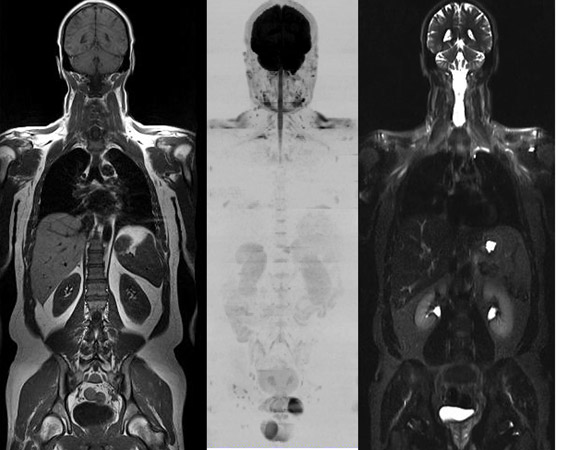Another Study Confirms Superiority of AIM’s Whole Body Scan for Cancer Imaging
A study published today in the Lancet Oncology Journal serves as a fitting follow up to our blog post from last week about when it is appropriate to choose MRI over PET/CT scans. The study, entitled Ionising radiation-free whole-body MRI versus F-fluorodeoxyglucose PET/CT scans for children and young adults with cancer, is essentially a reiteration of the message AIM has been promoting since opening its doors in 2009.
 The study, authored by scientists from the School of Medicine at Stanford University and Lucile Packard Children’s Hospital, posits that MRI is just as effective at detecting cancer as CT/PET, but without the radiation. A previous study from 2012 had already found a correlation in young adults between cancer and early childhood CT scans. Indeed, though CT/PET scans save lives through the early detection of cancer, they run the ironic risk of causing cancer later in life due to the intense levels of radiation required; according to the study, PET/CT scans expose patients to the radiation equivalent of 700 chest X-Rays.
The study, authored by scientists from the School of Medicine at Stanford University and Lucile Packard Children’s Hospital, posits that MRI is just as effective at detecting cancer as CT/PET, but without the radiation. A previous study from 2012 had already found a correlation in young adults between cancer and early childhood CT scans. Indeed, though CT/PET scans save lives through the early detection of cancer, they run the ironic risk of causing cancer later in life due to the intense levels of radiation required; according to the study, PET/CT scans expose patients to the radiation equivalent of 700 chest X-Rays.
PET/CT (positron emission tomography-computed tomography) combines the PET scan, which locates an injected radioactive isotope in the body, and the CT scan, which maps the body in a 3D graphic with X-Ray. One single PET/CT scan will expose a patient to the same amount of radiation recommended per year to people who work in radioactive environments.
This latest study looked at 22 patients ranging in age from 8-33, with a sum total of 174 cancerous tumors. PET/CT scans located 163 of 174 tumors; whole body DWIBS MRI located slightly less, with 158 of 174 tumors pinpointed, but with no risk of causing further harm.

